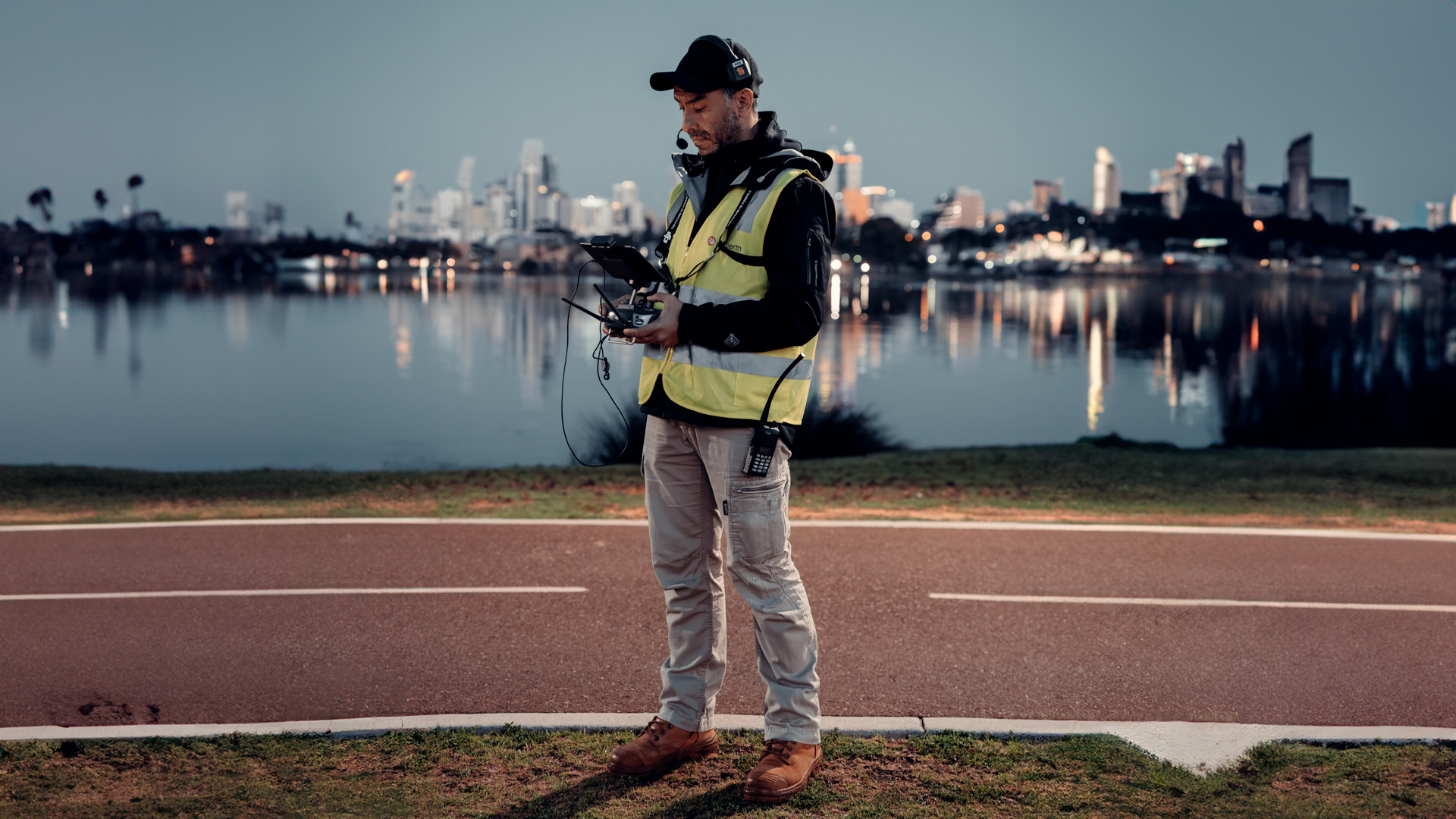
About the author : Rodrigo Branco Matsumoto
Meet Rodrigo, our chief remote pilot here at Sky Perth, where he's been transforming aerial videography into captivating stories for over eight years. At the heart of Rodrigo's work lies a profound passion for both the art of flying and the art of storytelling. This combination has led his work to be featured on platforms like Netflix, Stan, AppleTV+, Paramount+, Disney+, SBS On Demand, and even internationally with ZDF in Germany.
Rodrigo's aerial videography and photography journey is a testament to his dedication to mastering this unique craft. From capturing the vast beauty of Australia's landscapes to the dynamic energy of urban life across the globe, his work offers viewers a fresh, sky-high perspective. It's not just about the technical expertise of handling a drone; for Rodrigo, every flight is an opportunity to tell a story, to reveal the unseen, and to share a new viewpoint with the world.
Renowned for his collaborative spirit and innovative approach, Rodrigo brings more than technical skills to every project at Sky Perth. Whether working on a documentary, a TV series, or a bespoke project, his focus remains on creating visuals that resonate deeply with audiences. His commitment to quality and ability to capture the heart of a story make him a skilled pilot and a storyteller of the skies.
Do you want to know more about Rodrigo? Check his website: rodmatsumoto.com

Remote ID
The introduction of Remote ID for drones parallels the significant milestone in the early 20th century when automobiles were first required to have number plates. Like these plates revolutionised vehicle accountability and safety on roads, Remote ID marks a similar transformative moment in the aerial domain. It’s a modern-day equivalent, ensuring that drones in public spaces are identifiable and accountable.
With the enforcement of Remote ID in the USA set for 16 March 2024, this technology is now at the forefront of shaping the drone industry. Its relevance spans various sectors, significantly impacting delivery services, emergency response, and urban planning. It’s about ensuring that drones, comparable to vehicles on the road, are identifiable and safely integrated into our skies.
Understanding Remote ID
Remote ID is the drone’s digital identity card, broadcasting real-time identification and location data. This includes:
- the drone’s unique identifier,
- location,
- altitude,
- velocity, and
- takeoff point.
It’s a leap forward in drone technology, offering a comprehensive way to monitor and manage these devices in the air.
Data Sharing and Accessibility
The data broadcast by Remote ID will be accessible to various entities, including:
- air traffic controllers,
- law enforcement, and
- potentially the general public.
This broad access spectrum is key in enhancing safety and promoting responsible drone use, creating a safer, more transparent airspace.
Adhering to the New Norm
Post-March 2024, failing to comply with Remote ID regulations could lead to legal consequences for drone operators in the USA. This new norm mandates compliance for the safe integration of drones into the national airspace, setting a standard expected to be adopted globally in time.
Balancing Benefits and Challenges
For individuals, especially drone enthusiasts, adapting to Remote ID means contributing to safer airspace. However, it also introduces concerns about privacy and the cost of upgrading or acquiring compliant drones. Balancing technological progress with safety and privacy concerns is crucial for society.
Where to know more about Remote ID?
Are you interested in understanding about Remote ID and its impact on your drone activities?
- USA: https://www.faa.gov/uas/getting_started/remote_id
- Australia: https://www.drones.gov.au/policies-and-programs/initiatives/remote-identification
As we approach the enforcement date of Remote ID in the USA, it’s crucial to recognise its role in shaping the future of drone technology. This advancement is not just a regulatory requirement but a commitment to safety, responsibility, and innovation in the aerial domain.
Additional Insights:
- Benefits: Enhanced safety, improved airspace management, and increased accountability.
- Negatives: Privacy concerns and potential costs for upgrades.
- Global Perspective: While the USA leads with its enforcement date, agencies like Australia’s CASA are also observing and may implement similar measures, indicating a move towards global harmonisation in drone regulation.
How do you see Remote ID impacting your use of drones, whether for work, hobby, or simply as a member of the community?
Text adapted from: LinkedIn



